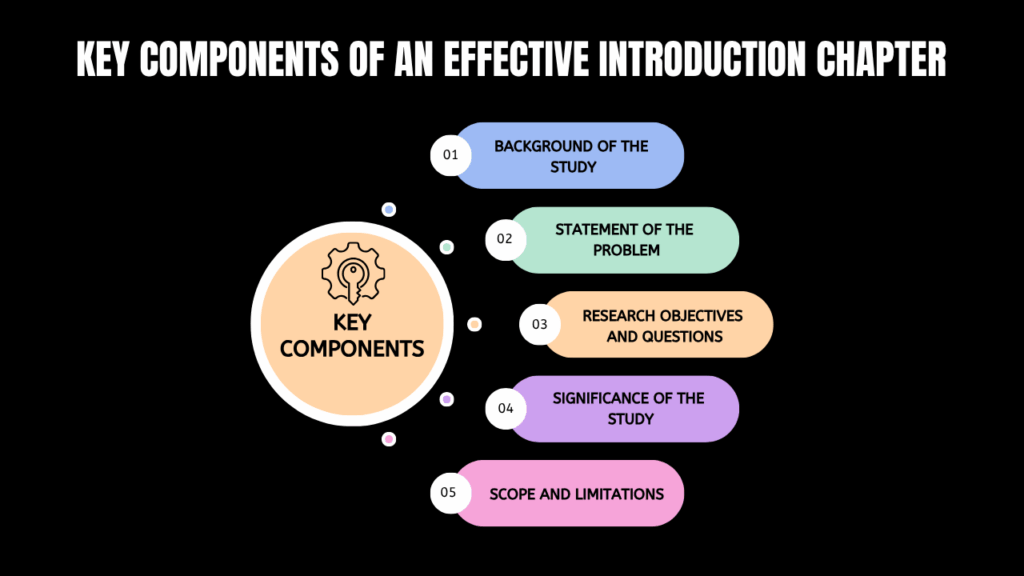Steps for Writing an Introduction Chapter: A Complete PhD Guide
Kenfra Research - Bavithra2025-08-01T11:21:28+05:30The introduction chapter is the opening to your thesis—it sets the tone, provides the foundation, and outlines what’s to come in your research. Whether you’re a PhD scholar or a postgraduate student, writing an introduction chapter can feel overwhelming. However, with a clear plan, this task can become much easier and even enjoyable.
In this blog, we’ll walk you through the structure of the introduction chapter, offer practical tips, and highlight common pitfalls. Let’s dive into how to make your research introduction stand out.
Why the Introduction Chapter Matters in a PhD Thesis?
The PhD thesis introduction chapter is your first opportunity to explain your research problem, its context, significance, and objectives. It answers the reader’s first question: What is this thesis about and why should I care?
A strong introduction chapter in thesis writing can captivate your examiners, provide direction for your research, and build your credibility as a researcher.
Key Components of an Effective Introduction Chapter

Here’s a detailed breakdown of the thesis introduction structure commonly followed in PhD and postgraduate dissertations:
1. Background of the Study
Start by presenting a brief overview of the topic. Explain the broader academic or real-world context of your research.
2. Statement of the Problem
Define the core issue your research is addressing. This section should highlight the gap in existing research or an unresolved question.
3. Research Objectives and Questions
Outline the aims of your research and present your key research questions. This gives your introduction direction and purpose.
4. Significance of the Study
Clarify why your study is important and how it contributes to the field. This part should show the value of your work in academic research and possibly in real-world higher education or policy contexts.
5. Scope and Limitations
Define what your research will and will not cover. This shows the boundaries and focus of your study.
6. Thesis Structure Overview
Briefly summarize what each chapter will address. This gives the reader a roadmap of your thesis.
Step-by-Step Guide to Writing an Introduction Chapter for Research
Here’s how to begin:
Step 1: Start Broad, Then Narrow Down
Begin with the big picture. What is the general area of your research? Then move toward your specific topic, issue, or question.
Step 2: Justify the Relevance
Use evidence, citations, or current events to highlight the importance of your study. This makes your research feel timely and necessary.
Step 3: Craft Strong Research Questions
Ensure your research writing clearly presents the questions or hypotheses that guide your investigation.
Step 4: Write Clearly and Concisely
Avoid jargon in the introduction. Clarity is key in academic thesis structure, especially in PhD-level scholarly writing.

Introduction Chapter Writing Tips for Postgraduate Students
- Avoid writing the intro first. Many researchers prefer drafting the introduction after completing the other chapters. This allows for better alignment with your results and discussion.
- Be specific but not overly detailed. Save in-depth analysis for the later chapters.
- Revisit and revise. The introduction chapter often needs multiple revisions for clarity and cohesion.
Common Mistakes in Writing the Thesis Introduction
- Being too vague or too detailed. Your introduction should provide an overview, not a data dump or an overly abstract essay.
- Failing to highlight significance. Always answer: Why does this research matter?
- Skipping structure overview. A roadmap helps your readers follow your argument.
- Using informal tone. Maintain academic rigor throughout.
Dissertation Introduction Example:
Here’s a simplified example for a PhD thesis in education:
“The integration of digital tools in higher education has transformed how knowledge is delivered and assessed. However, rural institutions in India continue to face significant challenges in adopting these technologies. This thesis explores the digital divide in rural postgraduate institutions and proposes policy frameworks for inclusive ed-tech adoption.”
This sample touches on academic research, sets the research methodology direction, and gives a clear thesis chapter one writing guide model.
How to Start a Thesis Introduction That Engages Readers?
Use a hook, such as a relevant quote, question, or shocking statistic. For example:
“Despite rapid advancements in online learning, more than 40% of rural colleges still lack reliable digital infrastructure.”
This opening is impactful, relevant, and instantly gives context.
Final Thoughts on Writing the First Chapter of a Dissertation
Whether you’re working on your PhD thesis or a postgraduate dissertation, mastering how to write an introduction chapter is crucial. It’s not just a formality—it’s the starting point of your academic story.
At Kenfra Research, we understand the importance of a strong introduction. A well-written introduction builds the foundation for your entire thesis. Use this guide to plan your structure, avoid common mistakes, and confidently present your research vision.
Remember, a well-written introduction builds a strong foundation for your entire thesis. Use this guide to plan your structure, avoid common mistakes, and confidently present your research vision.









Leave a Reply